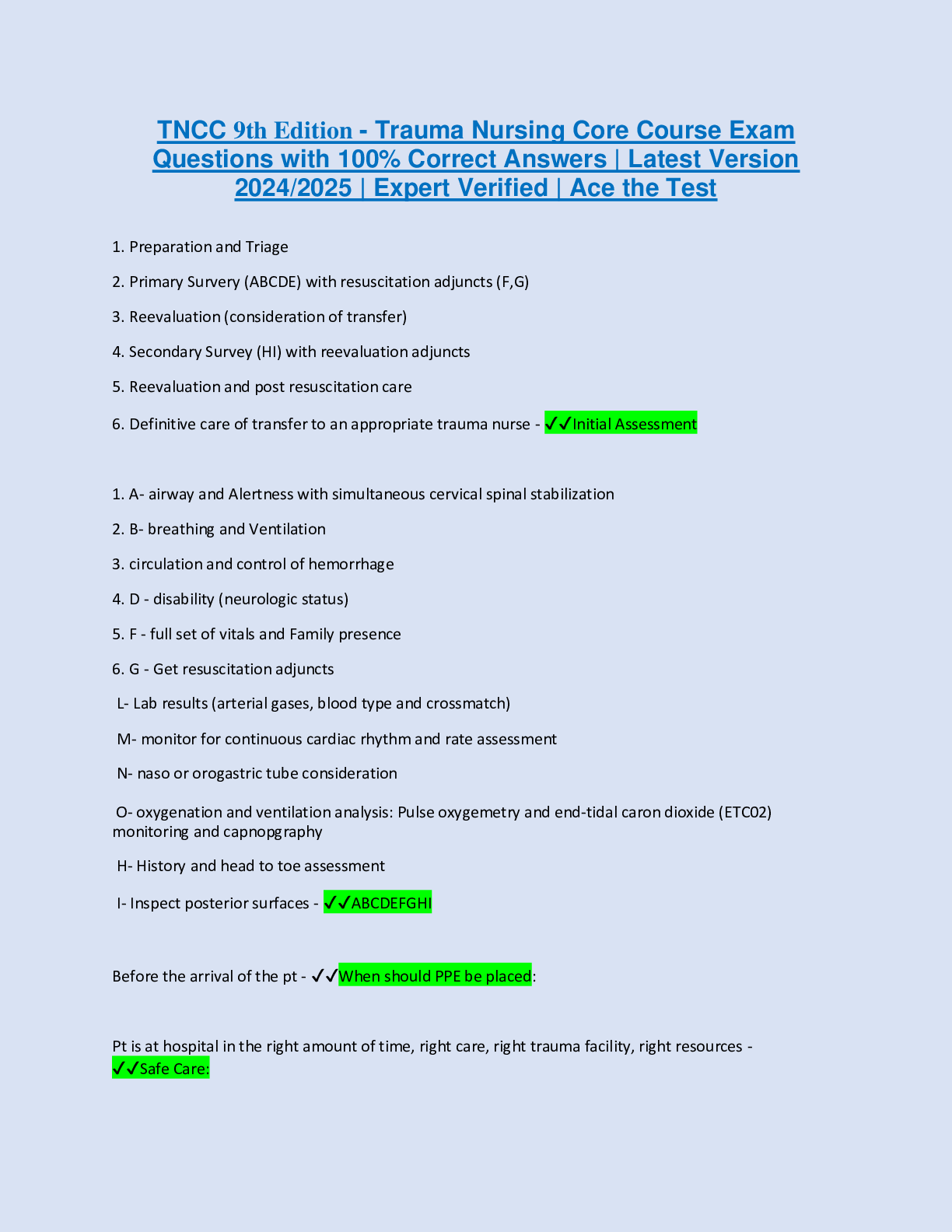*NURSING > STUDY GUIDE > Rasmussen College NURSING NUR280/NURN3 Final Exam Study Guide-REVIEWED AND VERIFIED BY EXPERTS 2021- (All)
Rasmussen College NURSING NUR280/NURN3 Final Exam Study Guide-REVIEWED AND VERIFIED BY EXPERTS 2021-GRADED A+
Document Content and Description Below
N3: Final Exam Study Guide 1. CAM (Complementary & Alternative Medicine) a. What is Complementary? i. “In addition to…” modern medicine b. What is Alternative? i. “Instead of…” modern... medicine c. Define “Chi” i. Chinese life force that provides warmth and protection from illness and injury. d. Reiki i. Use of hands to correct energy fields/chakras. Energy flows from universe into patient. Can help increase WBC and RBC production. Realignment of energy flow. e. Ayurveda i. Indian medicine. Preventive medicine that teaches health is balanced by nature, body, mind and spirit. Uses oils, diet, senses and behavior. f. Guided Imagery i. Focusing on an image either created by the therapist or by the patient’s mind. Uses all 5 senses. S/E are sleepiness and extreme relaxation. g. Biofeedback i. Uses thoughts to control physiological body responses. Electrodes are placed on patient to monitor body response to stress. Patient then relaxes those areas during times of pain, anxiety, temperature, HTN, TMJ, H/A, etc. 2. Stroke a. What test needs to be done right away when a stroke patient comes to an ER? i. CT SCAN immediately! This will help determine what type of stroke has occurred. ii. CT doesn’t require NPO status or any contrast. Results are immediate. b. A patient started having a headache at 4am and started slurring their speech around 0415. If they do, in fact, have an embolic stroke, how long is their window to be able to get TPA? Hint: First symptom was the headache. i. “Golden 3-Hour window” from the “last time normal” to the time the TPA is administered. 3. ICP a. ICP is… i. Intracranial Pressure (pressure within the skull) b. A normal ICP is… i. 7-15mmHg c. What things increase ICP? i. Anything that makes your face RED increases ICP ii. Blowing nose, sneezing, lowering HOB, swelling (tumors, stroke, meningitis, etc.). d. If a patient is at increased risk for increased ICP a patient who is intubated will be at 30-45% and a non-intubated person will be at 15% to 45%. Why? i. Elevating the HOB improves venous drainage and decreases ICP e. What do hypertonic saline and Mannitol do for ICP? i. Mannitol: takes ICP fluid to kidneys for removal ii. Hypertonic Saline: pulls fluid from the tissues into the bloodstream, such as burns, ICP and post-op to reduce swelling.f. Why is clustering a bunch of activities together for a patient with increased ICP a bad idea? i. This can increase ICP. Therefore the nurse must decrease stimuli and maintain a calm, low noise, low light, and stress-free environment. g. Why is giving a stool softener a good idea? i. We don’t want these patients to STRAIN with their bowel movements, as it will increase ICP. [Show More]
Last updated: 1 year ago
Preview 1 out of 19 pages

Reviews( 0 )
Document information
Connected school, study & course
About the document
Uploaded On
May 17, 2021
Number of pages
19
Written in
Additional information
This document has been written for:
Uploaded
May 17, 2021
Downloads
0
Views
43





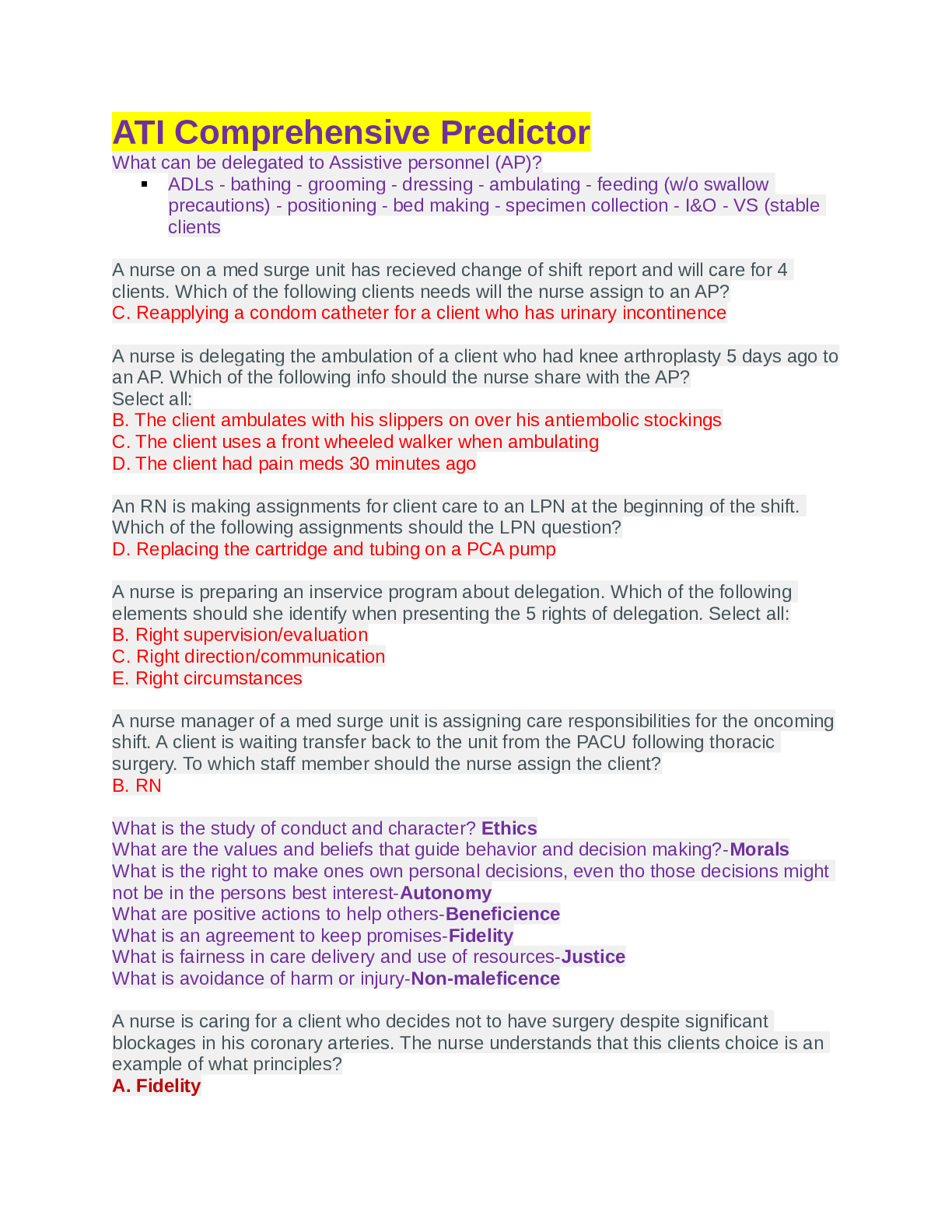

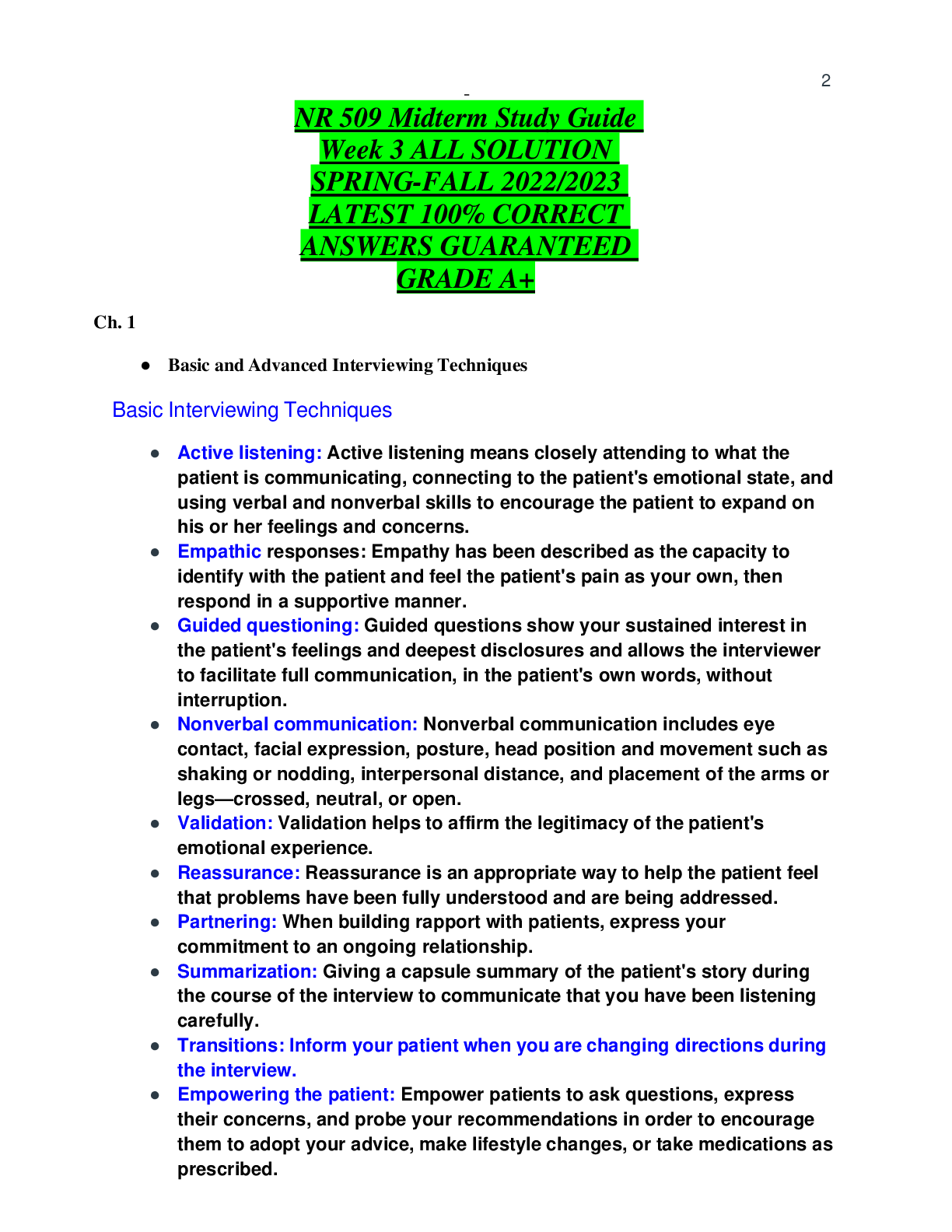
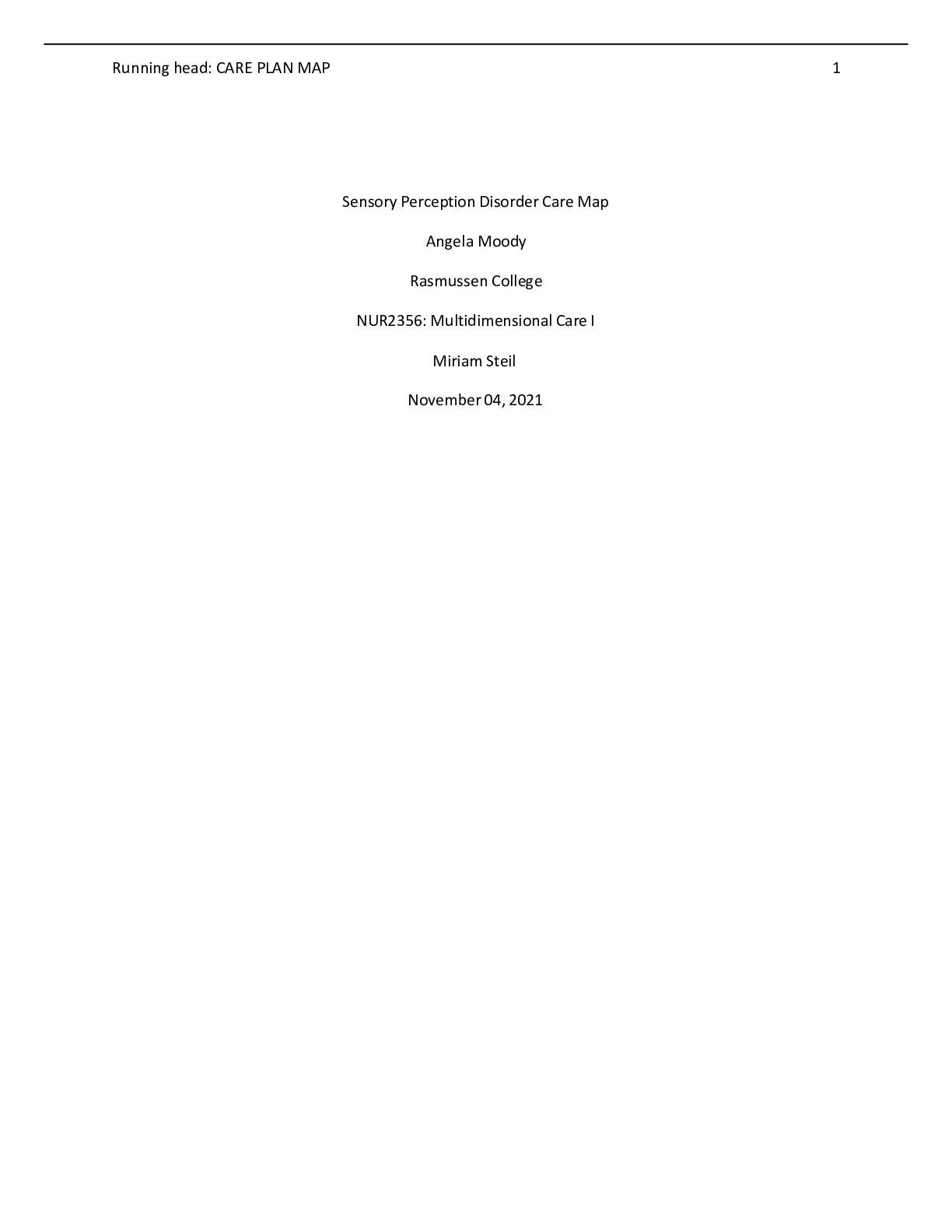
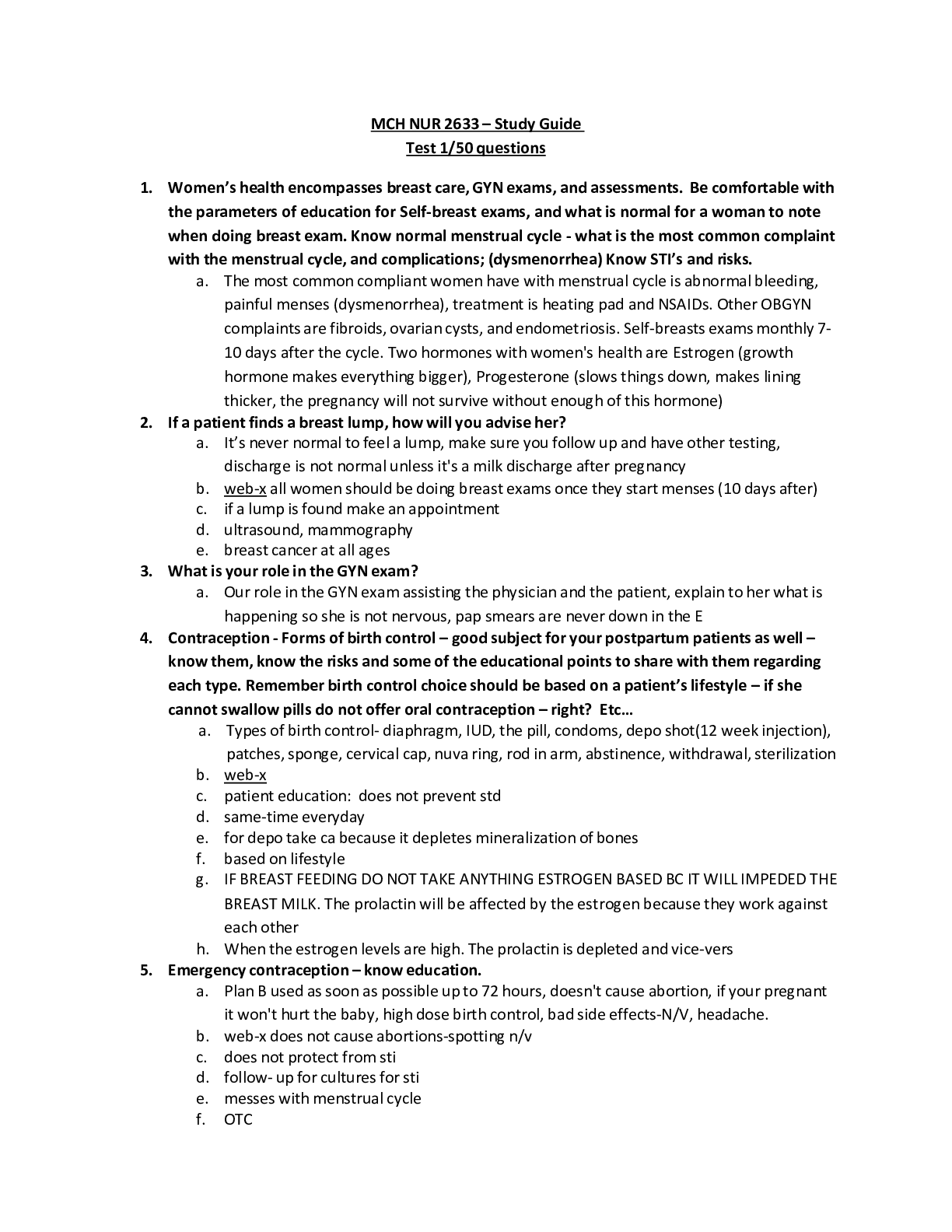
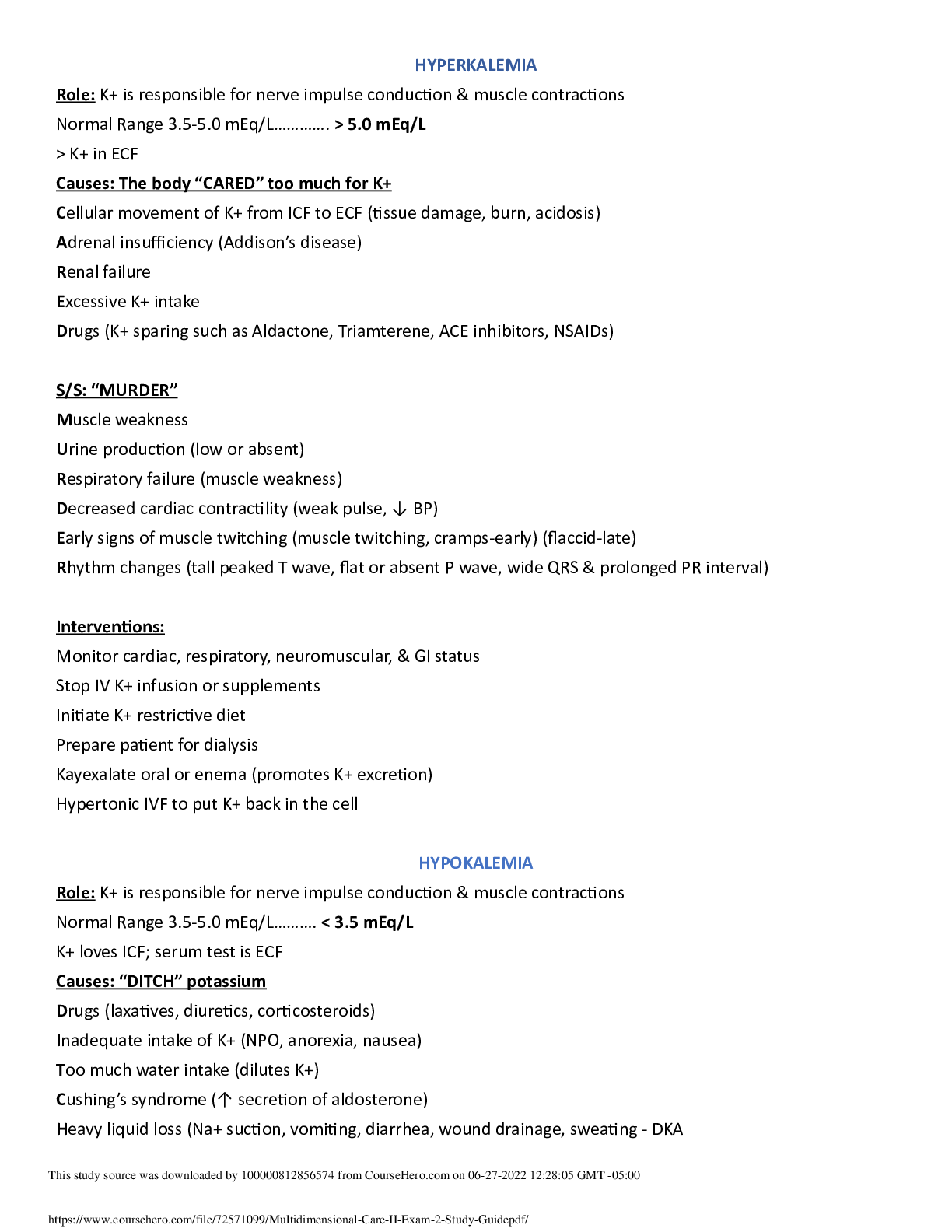
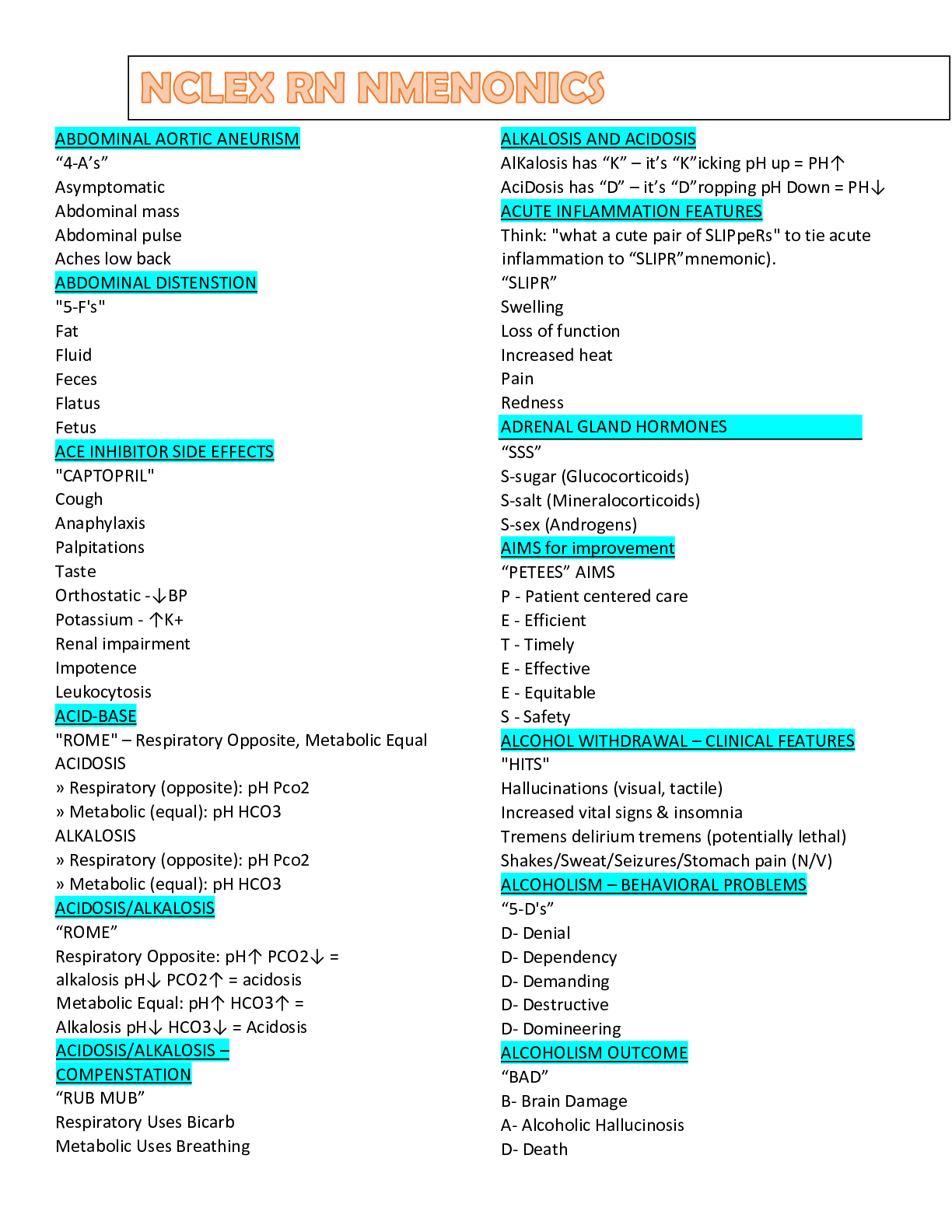
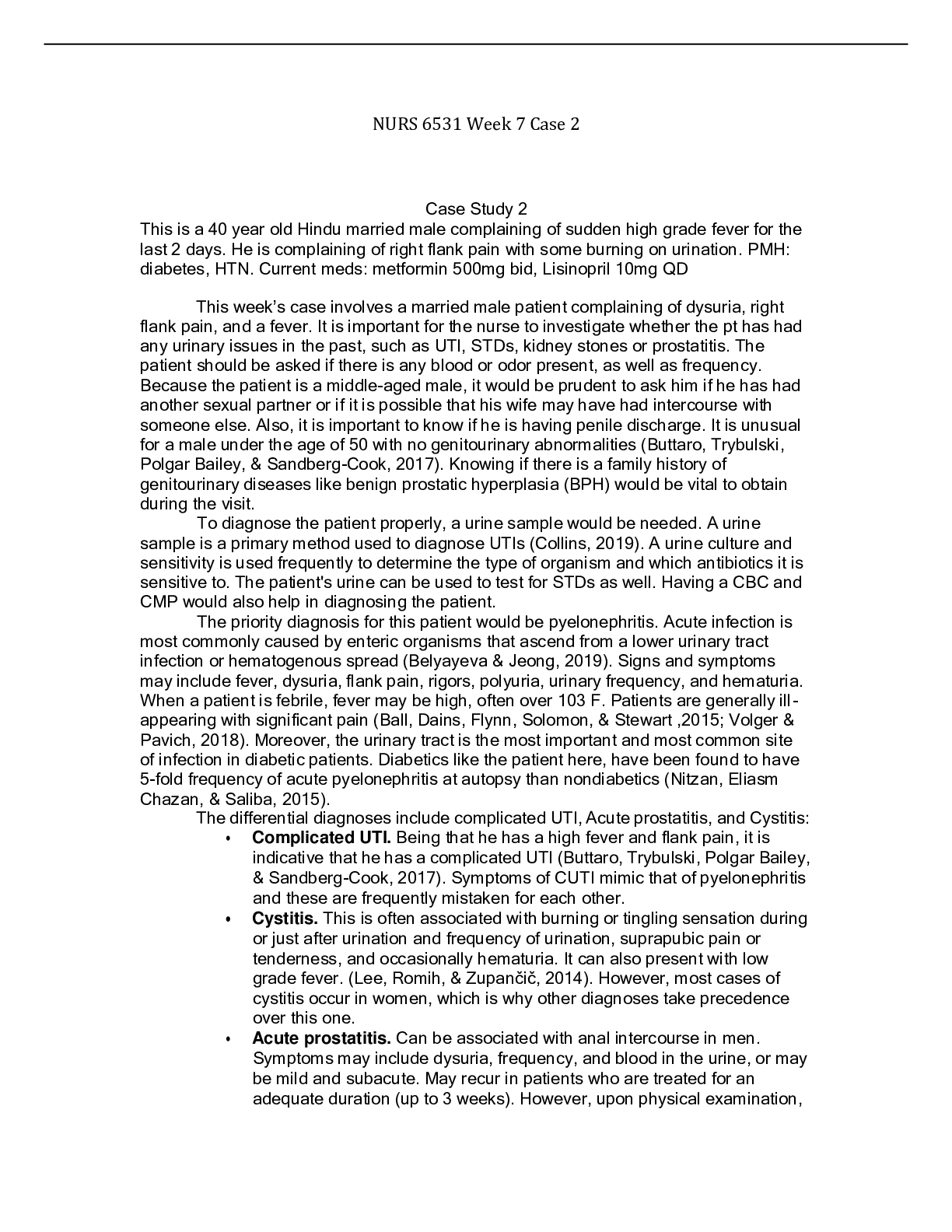

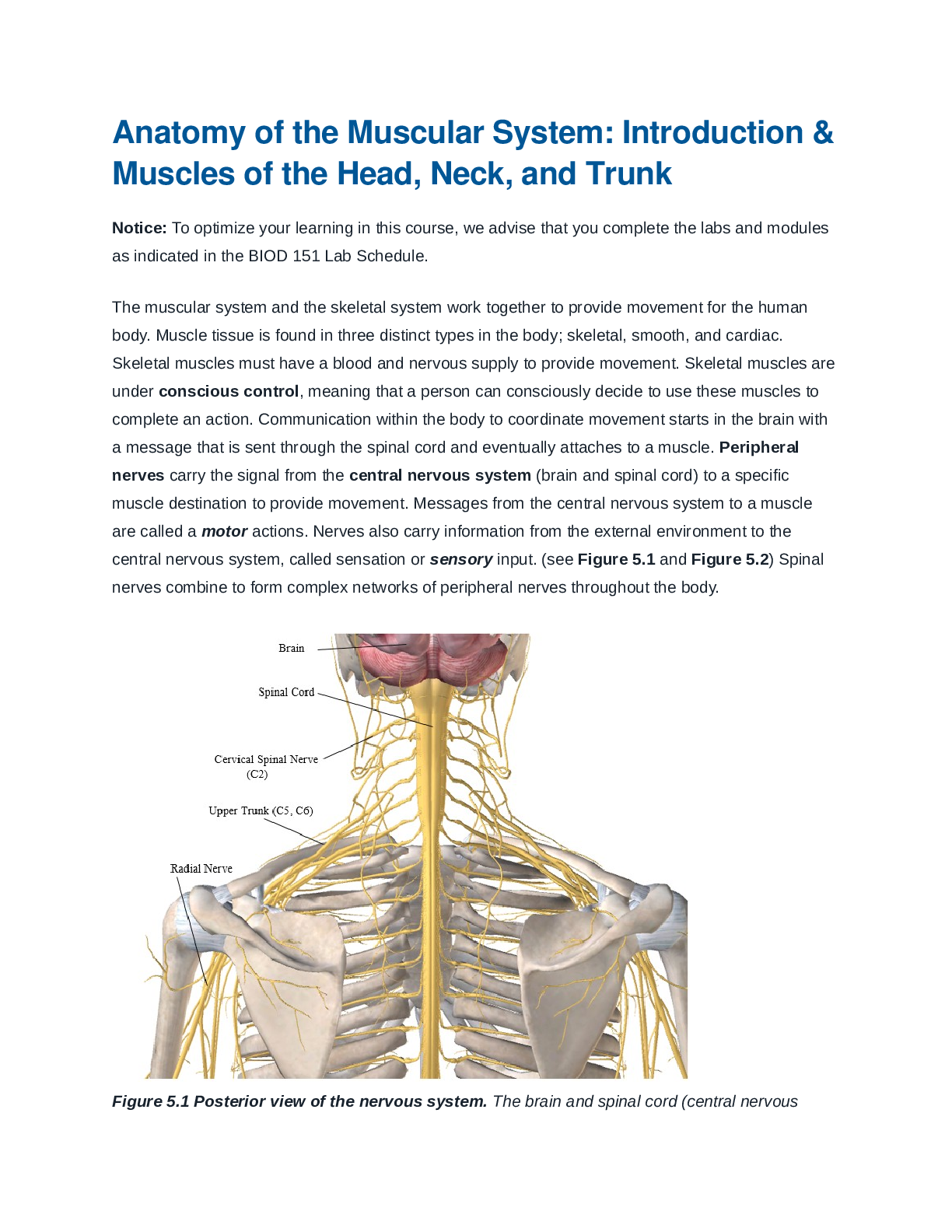


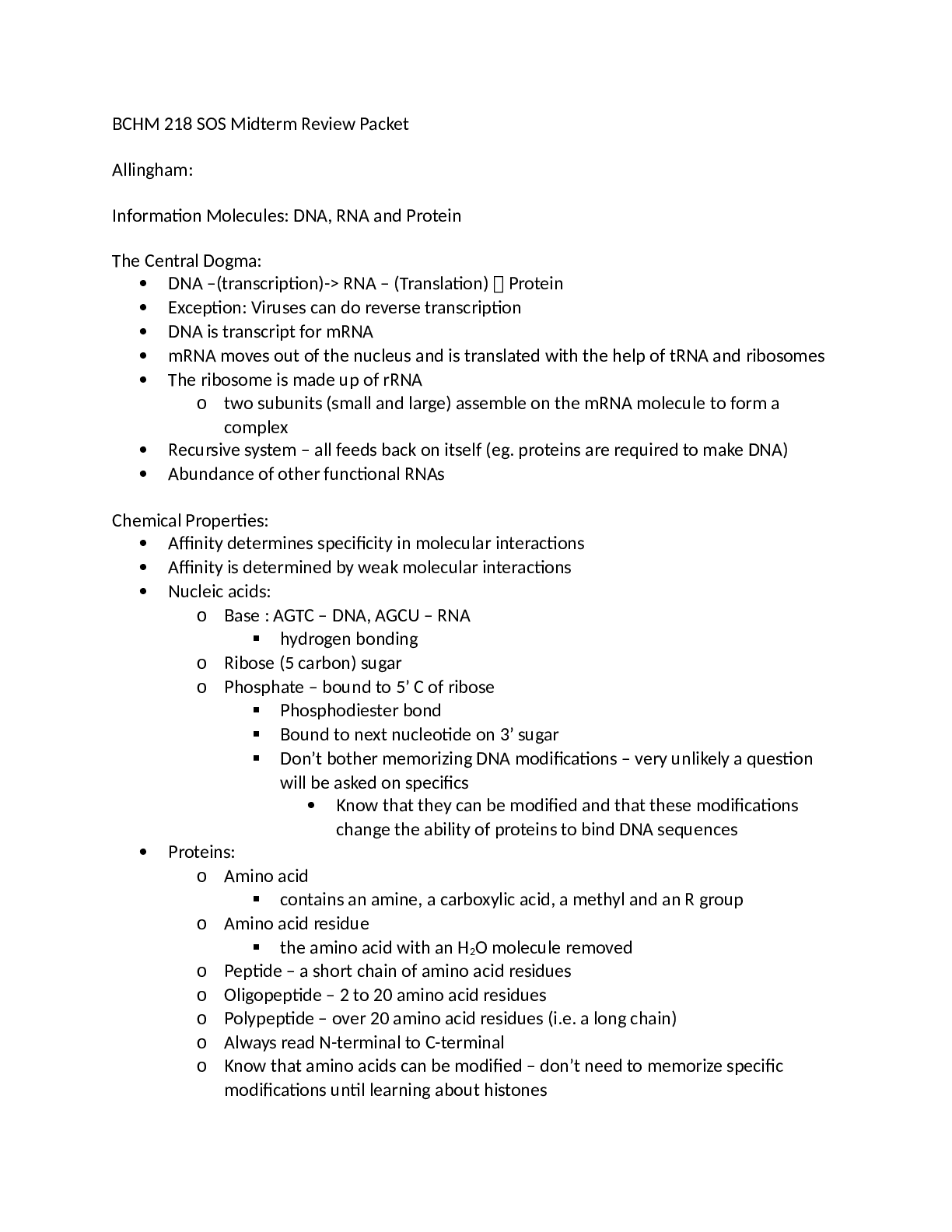
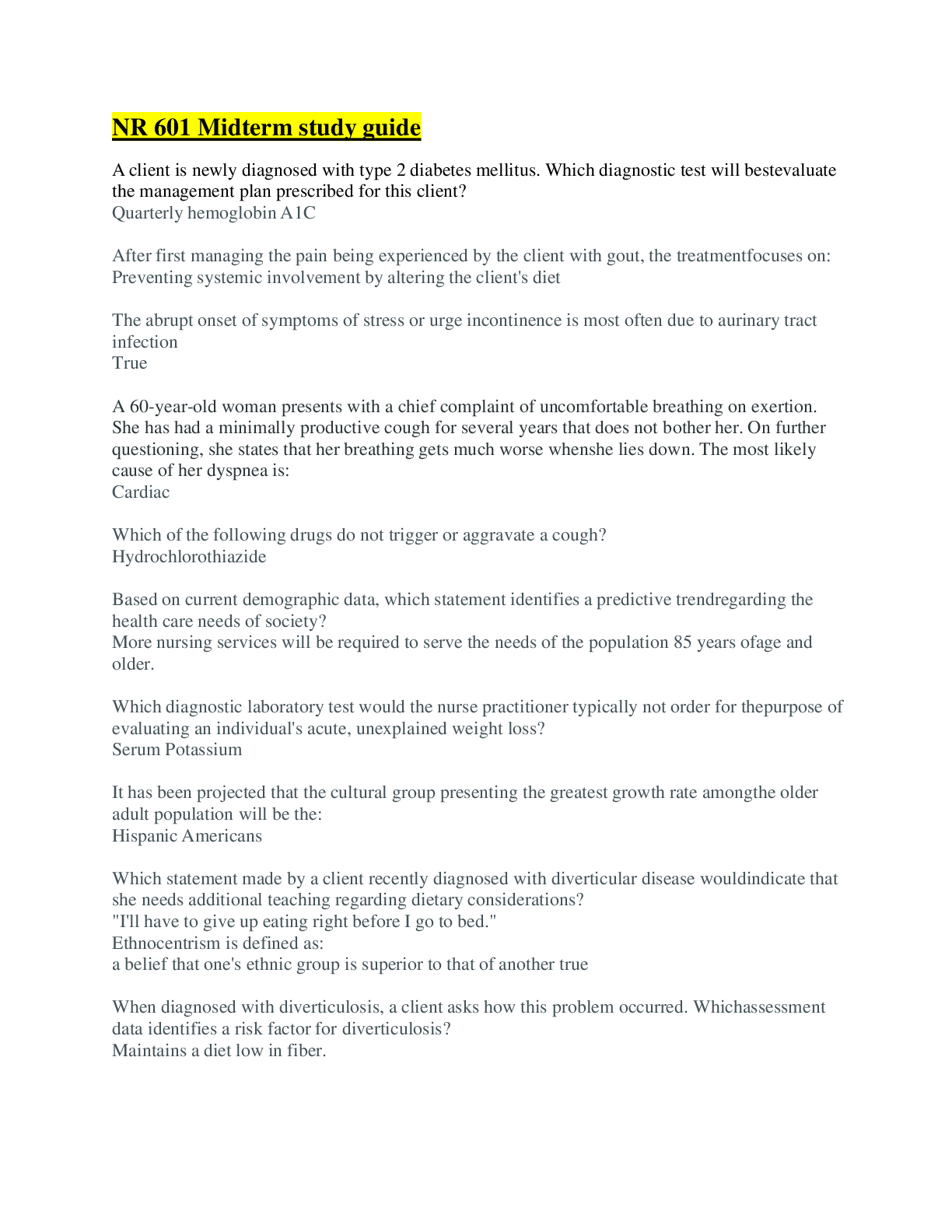
.png)
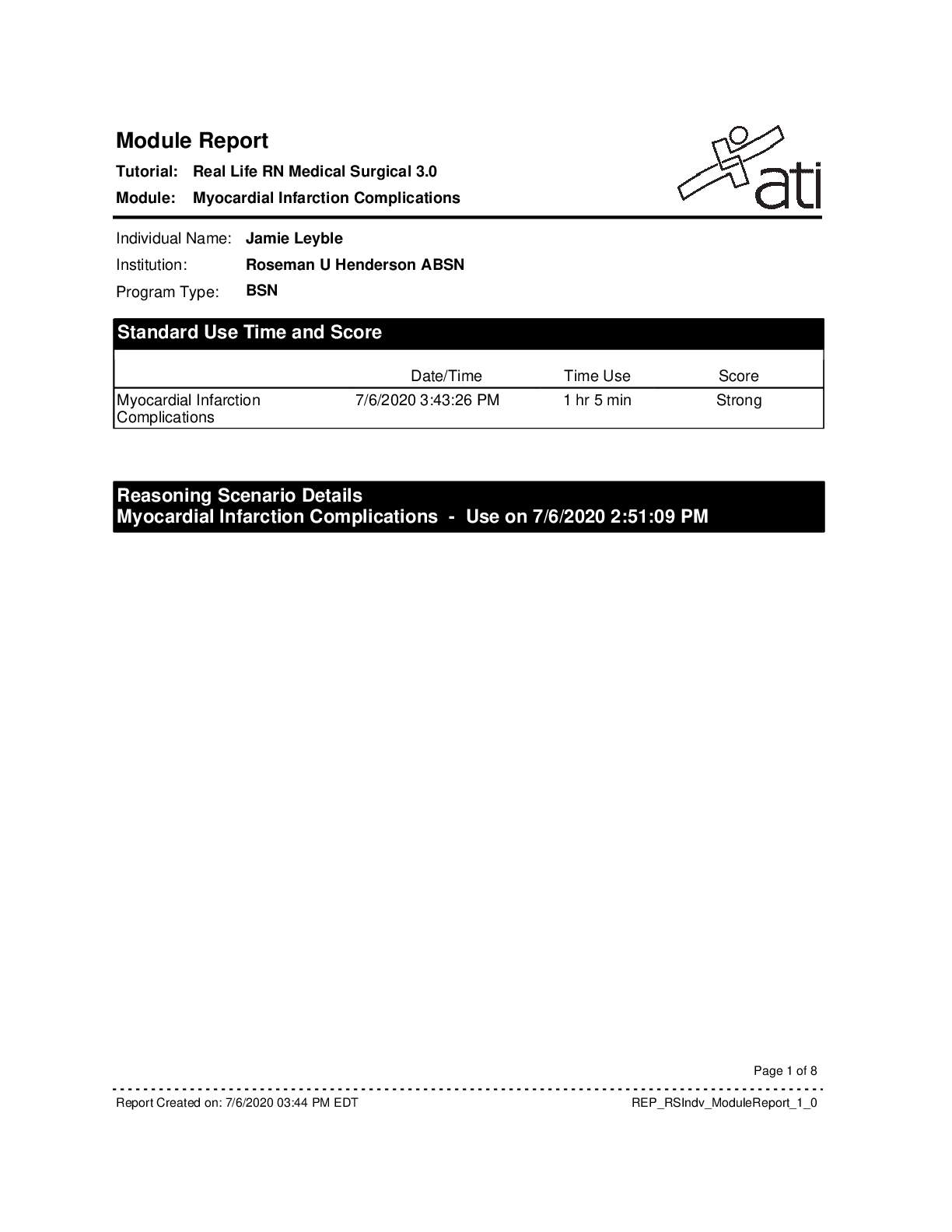


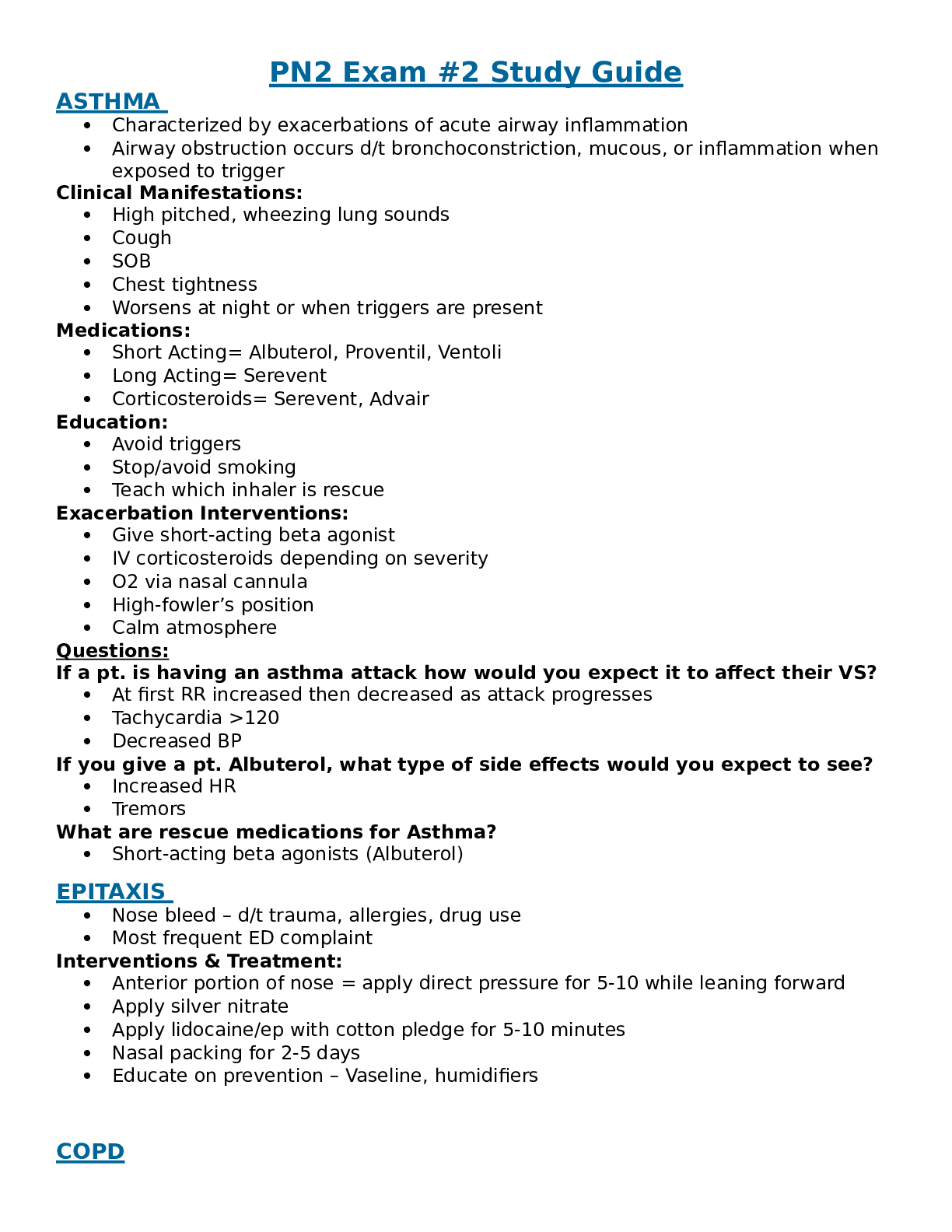
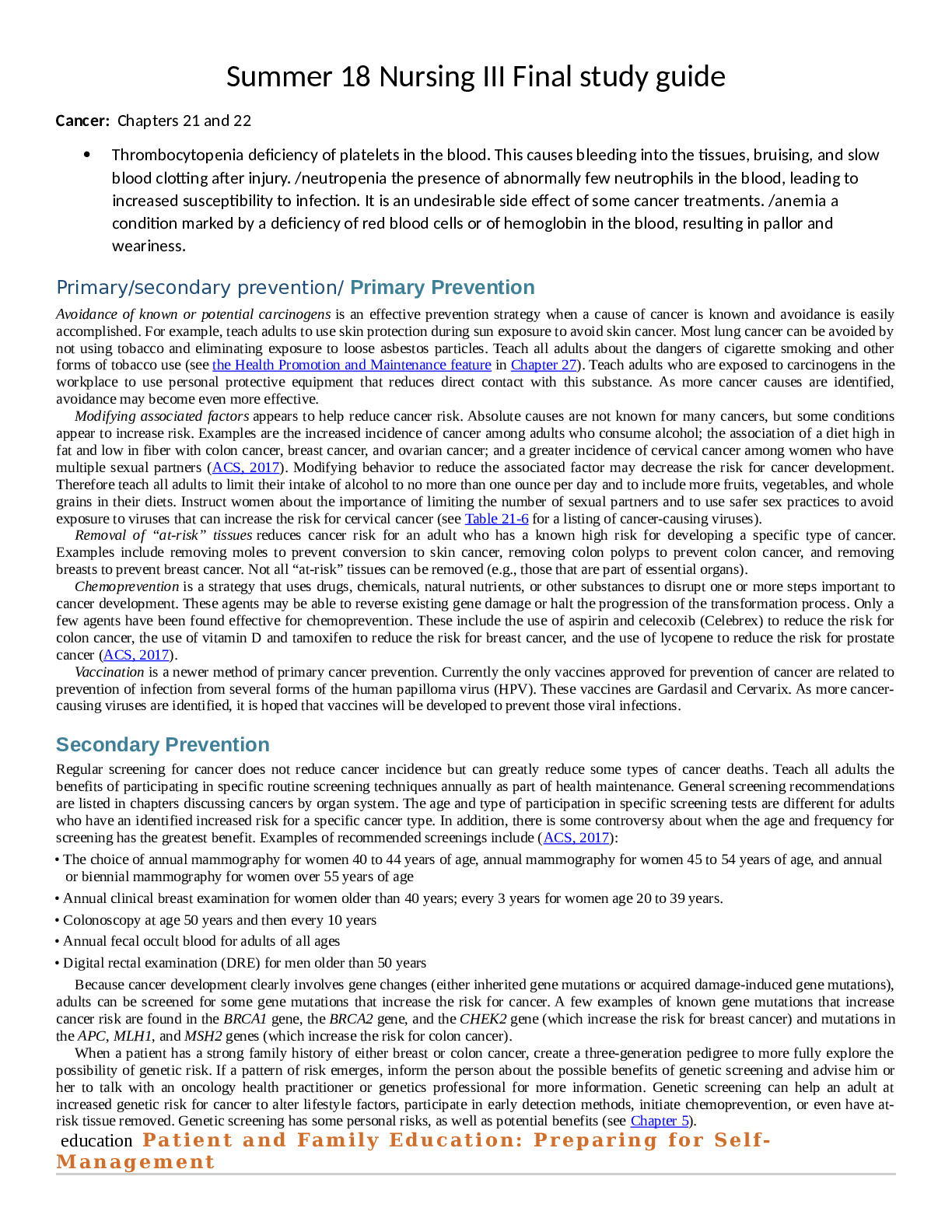
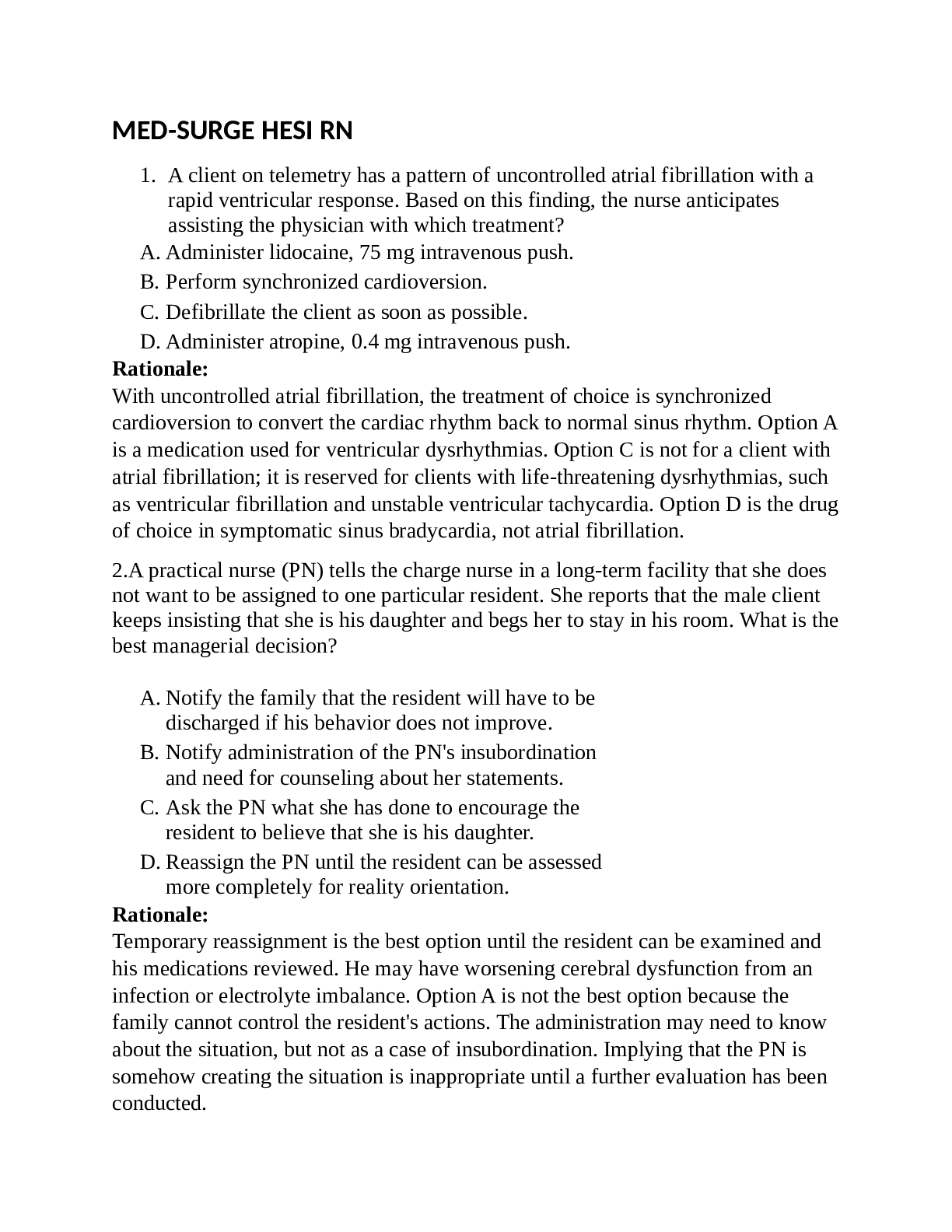
.png)



.png)

.png)

.png)
